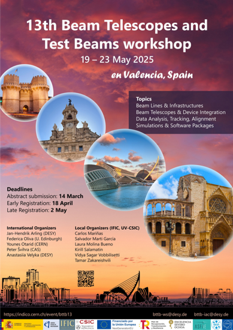Speaker
Description
In high-energy physics, there is a need to investigate silicon sensor concepts that offer large-area coverage and cost-efficiency for particle tracking detectors. Sensors based on CMOS imaging technology present a promising alternative silicon sensor concept.
As this technology follows a standardised industry process, it can provide lower sensor production costs and enable fast and large-scale production from various vendors.
The CMOS Strips project is investigating passive CMOS strip sensors fabricated by LFoundry in a 150 nm technology.
The stitching technique was employed to develop two different strip sensor formats.
The strip implant layout varies in doping concentration and width, allowing the study of various electric field configurations.
The performance of irradiated and unirradiated samples was evaluated based on several test beam campaigns conducted at the DESY II test beam facility. The detector response was also simulated using Monte Carlo methods combined with TCAD Device simulations.
This contribution summarises the test beam performance of the CMOS strip prototype concerning the cluster size, hit detection efficiency and spatial resolution.
In particular, the detector response simulated with Allpix$^2$ is presented and compared to test beam data.
Furthermore, an outlook on the next sensor submission for the CMOS Strips project, which will include an active front-end stage, is presented.
